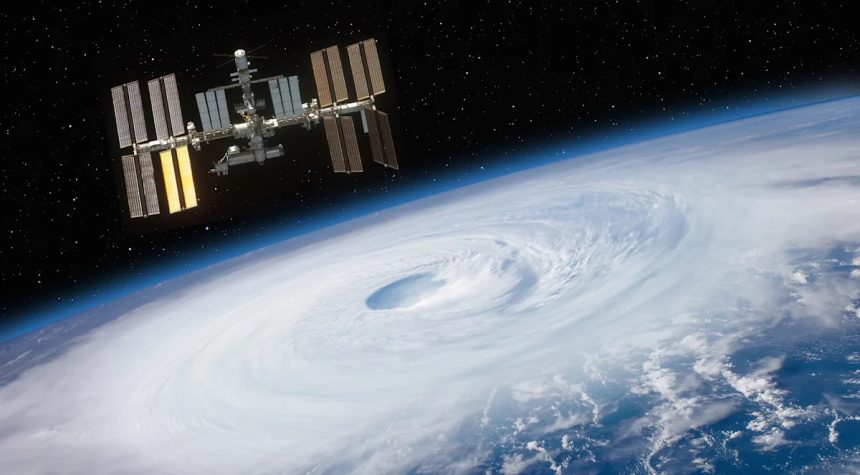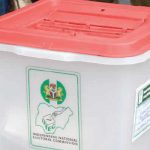Forecasters have been warning activity in the Atlantic basin will be picking up.
Their predictions came true over the weekend, when the fourth named storm of the season — Tropical Storm Dexter — developed ahead of the historical average.
The National Hurricane Center also is tracking two other systems out there, including near the coast of Florida and a tropical wave moving off the coast of Africa.
➤ Weather alerts via text: Sign up to get updates about current storms and weather events by location
The busiest period of hurricane season runs from mid-August through mid-October, with peak hitting Sept. 10, so we took a look at the past 24 years, since 2000, to see what storms have formed in August and how many have threatened or impacted Florida.
What are NOAA predictions for 2025 hurricane season?
NOAA is predicting a 60% chance for an above-normal hurricane season in 2025.
NOAA is predicting there is a 60% chance of an above-normal season. Forecasters are predicting:
2025 hurricane season so far
An average Atlantic hurricane season has 14 named storms, seven hurricanes, and three major hurricanes.
➤ National Hurricane Center tracking Tropical Storm Dexter, 2 other systems. Where are they going?
Here’s when this year’s named storms have developed, compared to historical averages:
-
Tropical Storm Andrea: formed June 24. Average start date: June 20
-
Tropical Storm Barry: formed June 29. Average start date: July 17
-
Tropical Storm Chantal: formed July 5. Average start date: Aug. 3.
-
Tropical Storm Dexter: formed Aug. 4. Average start date: Aug. 15, with the average first hurricane forming Aug. 11.
How often is there a named storm in August?
We looked through National Hurricane Center for the past 24 years — since 2000 — to see how often a tropical storm or hurricane developed in August. Here’s what we found:
-
August major hurricanes: 24
-
August tropical storms: 53
Here’s the breakdown:
-
-
Tropical Storm Emily: Aug. 20-21
-
Major Hurricane Franklin: Aug. 20-Sept. 1
-
Tropical Storm Gert: Aug. 19-Sept. 4
-
Tropical Storm Harold: Aug. 21-23
-
Tropical Storm Jose: Aug. 29-Sept. 1
-
Tropical Storm Katia: Aug. 31-Sept. 4
-
-
2018
-
Tropical Storm Debby: Aug. 7-9
-
Tropical Storm Ernesto: Aug. 15-17
-
Major Hurricane Florence: Aug. 31-Sept. 17
-
-
2016
-
Tropical Storm Fiona: Aug. 16-23
-
Major Hurricane Gaston: Aug. 22-Sept. 2
-
2015
-
Major Hurricane Danny: Aug. 18-24
-
Tropical Storm Erika: Aug. 24-28
-
-
2014
-
Hurricane Bertha: Aug. 1-6
-
Hurricane Cristobal: Aug. 23-29
-
-
2013
-
Tropical Storm Dorian: July 23-Aug. 3
-
Tropical Storm Erin: Aug. 15-18
-
Tropical Storm Fernand: Aug. 25-26
-
-
2012
-
Hurricane Ernesto: Aug. 1-10
-
Tropical Storm Florence: Aug. 3-6
-
Hurricane Gordon: Aug. 15-20
-
Tropical Storm Helene: Aug. 9-18
-
Tropical Storm Joyce: Aug. 22-24
-
Hurricane Kirk: Aug. 28-Sept. 2
-
Hurricane Leslie: Aug. 30-Sept. 11
-
-
2011
-
Tropical Storm Emily: Aug. 2-7
-
Tropical Storm Franklin: Aug. 12-13
-
Tropical Storm Gert: Aug. 13-16
-
Tropical Storm Harvey: Aug. 19-22
-
Major Hurricane Irene: Aug. 21-28
-
Tropical Storm Jose: Aug. 27-28
-
Major Hurricane Katia: Aug. 29-Sept. 10
-
-
2010
-
Tropical Storm Colin: Aug. 2-8
-
Major Hurricane Danielle: Aug. 21-30
-
Tropical Storm Fiona: Aug. 30-Sept. 3
-
-
2007
-
Tropical storm Chantal: July 31-Aug. 1
-
Major Hurricane Dean: Aug. 13-23
-
Tropical Storm Erin: Aug. 15-17
-
Major Hurricane Felix: Aug. 31-Sept. 5
-
-
2006
-
Tropical Storm Chris: Aug. 1-4
-
Tropical Storm Debby: Aug. 21-26
-
-
2005
-
Tropical Storm Harvey: Aug. 2-8
-
Hurricane Irene: Aug. 4-18
-
Tropical Storm Jose: Aug. 22-23
-
Tropical Storm Lee: Aug. 28-Sept. 2
-
-
2003
-
Hurricane Erika: Aug. 14-17
-
Major Hurricane Fabian: Aug. 27-Sept. 8
-
Tropical Storm Grace: Aug. 30-Sept. 2
-
-
2002
-
Tropical Storm Bertha: Aug. 4-9
-
Tropical Storm Cristobal: Aug. 5-8
-
Tropical Storm Dolly: Aug. 29-Sept. 4
-
-
2000
-
Major Hurricane Alberto: Aug. 3-23
-
Tropical Storm Beryl: Aug. 13-15
-
Tropical Storm Chris: Aug. 17-19
-
How many named storms have threatened Florida in August since 2000?
We looked through National Hurricane Center for the past 24 years — since 2000 — to see how often a tropical storm or hurricane developed in August. Here’s what we found:
-
August major hurricanes: 24
-
August tropical storms: 53
See which ones impacted Florida:
August 2024 saw Hurricane Debby hit Florida Big Bend
-
Hurricane Debby: Aug. 3-9, 2024. Category 1 hurricane at landfall along Florida Big Bend near Steinhatchee on Aug. 5.
Major Hurricane Idalia hits Florida Big Bend as Cat 3 storm in 2023
-
Major Hurricane Idalia: Aug. 26-Aug. 31, 2023. Category 3 hurricane at landfall along Florida Big Bend near Keaton Beach, the third strongest landfalling hurricane in modern history for the area.
2 major hurricanes, tropical storm impacted Florida in 2021
-
Tropical Storm Fred: Aug. 11-17, 2021. Tropical storm at landfall southwest of Apalachicola along Florida’s Panhandle Aug. 16.
-
Major Hurricane Ida: Aug. 26-Sept. 1, 2021: Short-lived tropical-storm-force winds occurred over the Lower Florida Keys in association with an outer rainband. Heavy rainfall reported in some areas, including western Panhandle.
-
Major Hurricane Larry: Aug. 31-Sept. 11, 2021. Larry made landfall in Canada, but the hurricane’s large wind field generated swells that impacted beaches along the Atlantic coast. A 69-year-old man drowned at Jetty Park in Cape Canaveral.
Remember Isaias? Hurricanes missed Florida in 2020 but impacts still felt
-
Hurricane Isaias: July 30-Aug. 4, 2020: Isaias made its closest approach to Florida as a tropical storm near West Palm Beach and Fort Lauderdale.
-
Major Hurricane Laura: Aug. 20-29, 2020: While Laura did not make landfall in Florida, there was a surf-related drowning associated with Laura in St. George Island in Florida.
-
Hurricane Marco: Aug. 21-25, 2020. Storm surge associated with Marco reached 1 to 2 feet above ground level in the Florida Panhandle.
Dorian gives Florida scare after massive hit to Bahamas in 2019
-
Major Hurricane Dorian: Aug. 24-Sept. 7, 2019. Dorian gave Florida quite a scare as it approached the state, but the intense winds stays east of the state as it moved north. Tropical-storm-force winds did impact areas from Broward County north as it moved parallel to the coast before making landfall over Cape Hatteras as a Category 2 storm. Prior to that, Dorian became the strongest hurricane in modern records to make landfall in the Bahamas, hitting Elbow Cay, Great Abacao, with estimated winds of 184 mph.
-
Tropical Storm Erin: Aug. 26-29, 2019. Erin was primarily of non-tropical origin, moving over southeastern Florida Aug. 24 as an area of low pressure before developing into a tropical storm.
Major Hurricane Irma makes landfall in Florida as Category 4 storm in 2017
-
Tropical Storm Emily: July 30-Aug. 1, 2017: Emily was a short-lived tropical storm that developed unexpectedly and made landfall just south of Tampa Bay.
-
Major Hurricane Irma: Aug. 30-Sept. 12, 2017: Irma made landfall as a Category 4 hurricane in the Florida Keys near Cudjoe Key and struck southwestern Florida near Marco Island as a Category 3 storm. Irma caused widespread devastation across the affected areas and was one of the strongest and costliest hurricanes on record in the Atlantic basin at the time.
Hurricane Hermine hits Florida Big Bend in 2016
-
Hurricane Hermine: Aug. 28-Sept. 3, 2016: Hermine was a Category 1 hurricane that made landfall along the sparsely populated Big Bend coast of Florida just east of St. Marks, becoming the first hurricane to make landfall in Florida since Wilma in 2005.
Hurricane Isaac brings tropical-storm-force winds, storm surge to Florida in 2012
-
Hurricane Isaac: Aug. 21-Sept. 1, 2012: Isaac brought tropical-storm-force winds to the Keys and South Florida as rainbands moved through the area Aug. 26. Storm surge of 3.4 feet were reported at Pensacola and Apalachee Bay.
August hurricane in 2010 misses Florida, but bring death in rough surf
-
Major Hurricane Danielle: Aug. 21-30, 2010. Danielle stayed in the Atlantic, but a 47-year old man drowned in rough surf in Satellite Beach.
2009 storms bring more drowning deaths to Florida
-
Major Hurricane Bill: Aug. 15-24, 2009. Bill stayed in the Atlantic until it made landfall in Newfoundland as a tropical storm. A 54-year-old swimmer drowned in New Smyrna Beach in rough seas caused by Bill.
-
Tropical Storm Claudette: Aug. 16-17, 2009. Claudette made landfall as a tropical storm near Fort Walton Beach, Aug. 17. One person died by drowning near Shell Island.
August 2008 storms bring tornadoes, rain up to 27 inches to Florida. Fay made record 4 landfalls in Florida
-
Tropical Storm Fay: Aug. 15-26, 2008. Fay was a long-lived storm that brought heavy rainfall and flooding; 27.65 inches were recorded near Melbourne. Nineteen tornadoes were reported in Florida. Five deaths were reported in Florida. The storm made eight landfalls, including a record four in Florida:
-
Between Cape Romano and Everglades City, Aug. 19
-
Near Flagler Beach, Aug. 21
-
Southwest of Carrabelle Aug. 23
-
Major Hurricane Gustav: Aug. 25-Sept. 4, 2008. While Gustav made landfall in Louisiana, the storm produced six tornadoes in Florida. Four deaths in Florida were drownings in rip currents caused by high surf produced by the hurricane.
Hurricane Ernesto makes 2 landfalls in Florida in 2006
-
Hurricane Ernesto: Aug. 24-Sept. 1, 2006. Ernesto made landfall as a tropical storm at Plantation Key Aug. 30 and a second landfall on the mainland hours later in southwestern Miami-Dade County. The storm brought 3-6 inches of rain in some areas from Cape Canaveral to Lake Okeechobee. Two tornadoes were reported in Osceola County.
Hurricane Katrina hit Florida as Category 1 storm before targeting Louisiana in 2005

People come out of their homes to a flooded street after Hurricane Katrina hit the area with heavy wind and rain August 29, 2005 in New Orleans, Louisiana. Katrina was down graded to a category 4 storm as it approached New Orleans.
-
Major Hurricane Katrina: Aug. 23-30, 2005. Described at the the time as “one of the most devastating natural disasters in United States history,” Katrina brought fatalities and damage, making landfall in Florida as a Category 1 hurricane near the border of Miami-Dade and Broward counties before moving into the Gulf. It strengthened into a Cat 5 storm but weakened before making landfall near Buras, Louisiana, as a strong Category 3 hurricane. Six direct deaths associated with Katrina were reported in Florida, three from drowning and three from downed trees.
2004 was year Florida would rather forget. Category 4 Hurricane Charley small, but powerful. It wasn’t only one to make landfall
-
Tropical Storm Bonnie: Aug. 3-14, 2004. Bonnie made landfall near St. Vincent Island as a weak tropical storm.
-
Major Hurricane Charley: Aug. 9-14, 2004. Category 4 Hurricane Charley was the strongest hurricane to hit the United States since Andrew in 1992, making landfall Aug. 13 near Cayo Costa before the eye passed over Punta Gorda. Although small in size, Charley caused catastrophic wind damage in Charlotte County and serious damage over the Florida peninsula before it moved into the Atlantic near Daytona Beach Aug. 14.
-
Nine tornadoes reported across Florida peninsula
-
Rainfall up to 8 inches reported.
-
Storm surge of 4.2 feet reported in Estero Bay.
-
Charley was directly responsible for 10 deaths in the United States, including nine in Florida, and 24 indirect deaths in Florida.
-
-
Major Hurricane Frances: Aug. 25-Sept. 8, 2004. Frances made landfall over the southern end of Hutchinson Island Sept. 5 as a Category 2 hurricane. After moving into the Gulf, it made another landfall near the mouth of the Aucilla River in the Florida Big Bend Sept. 7.
-
Estimated storm surge was 8 feet near Vero Beach and 6 feet around Cocoa Beach.
-
Rainfall was estimated at 15.84 in at High Springs.
-
Twenty-three tornadoes associated with Frances were reported in Florida.
-
Five direct deaths and 32 indirect deaths were reported in Florida.
-
Barry makes landfall in Florida Panhandle, bringing heavy rain, 3 tornadoes
-
Tropical Storm Barry: Aug. 2-7, 2001. Barry was a strong tropical storm that caused minor damage in the western Florida Panhandle after making landfall near Santa Rosa Beach Aug. 6.
-
Storm total rainfalls were generally 5-9 inches over the Florida Panhandle.
-
Pre-Barry tropical wave produced 3 to 8 inches of rain over portions of southern Florida with local amounts as high as 13 inches in Martin County.
-
Three tornadoes were reported in Florida, causing minor damage.
-
Hurricane Debby prompts evacuation of Keys in 2000 before ‘dissipating rather unexpectedly’
-
Hurricane Debby: Aug. 19-24, 2000. Debby looked as if it would be a significant threat to Florida but it “dissipated rather unexpectedly” after hitting the islands in the northeast Caribbean. An evacuation of non-residents from the Florida Keys was ordered after models shoed Debby could reach South Florida with a central pressure corresponding to a major hurricane.
Who comes up with hurricane names?
The World Meteorological Organization maintains six lists of names to be used for tropical storms and hurricanes, along with a list of alternative names if all names are used during the hurricane season.
The lists are used on a rotating basis.
A name is retired only if a storm is “so deadly or costly that the future use of its name for a different storm would be inappropriate for reasons of sensitivity,” according to NOAA.
At an annual meeting of the World Meteorological Organization, the offending name may be stricken from the list and another name is then selected to replace it.
When have ‘other’ Dexters formed in Atlantic? Dexter replaced Dorian on Atlantic hurricane list

Floridians feared Hurricane Dorian was headed for the Sunshine State before it curved northward to make landfall over North Carolina’s Outer Banks. Dorian is seen on satellite in this image provided by the Regional and Mesoscale Meteorology Branch of NOAA/NESDIS at the Cooperative Institute for Research in the Atmosphere.
If you don’t remember Dexter among the list of storms for the Atlantic, there’s a good reason for it.
Dexter replaced Dorian after that hurricane caused destruction in the Bahamas in 2019 and threatened Florida as a major hurricane before skirting the coast as it turned north.
➤ Tropical Storm Dexter forms off US coast. See latest spaghetti models, any Florida impacts
➤ Track Tropical Storm Dexter, see latest spaghetti models on where storm could go
Since names appear once every six years; 2025 marks the first time Dexter has appeared.
When is the Atlantic hurricane season?
The Atlantic hurricane season runs from June 1 through Nov. 30.
Ninety-seven percent of tropical cyclone activity occurs during this time period, NOAA said.
The Atlantic basin includes the northern Atlantic Ocean, Caribbean Sea and Gulf of America, as the Gulf of Mexico is now known in the U.S. per an order from President Trump. NOAA and the National Hurricane Center are now using Gulf of America on its maps and in its advisories.
Stay informed. Get weather alerts via text
What’s next?
We will update our tropical weather coverage daily.
Download your local site’s app to ensure you’re always connected to the news. And look for our special subscription offers here.
This article originally appeared on Florida Times-Union: August hurricanes, tropical storms: Historical threat to Florida









